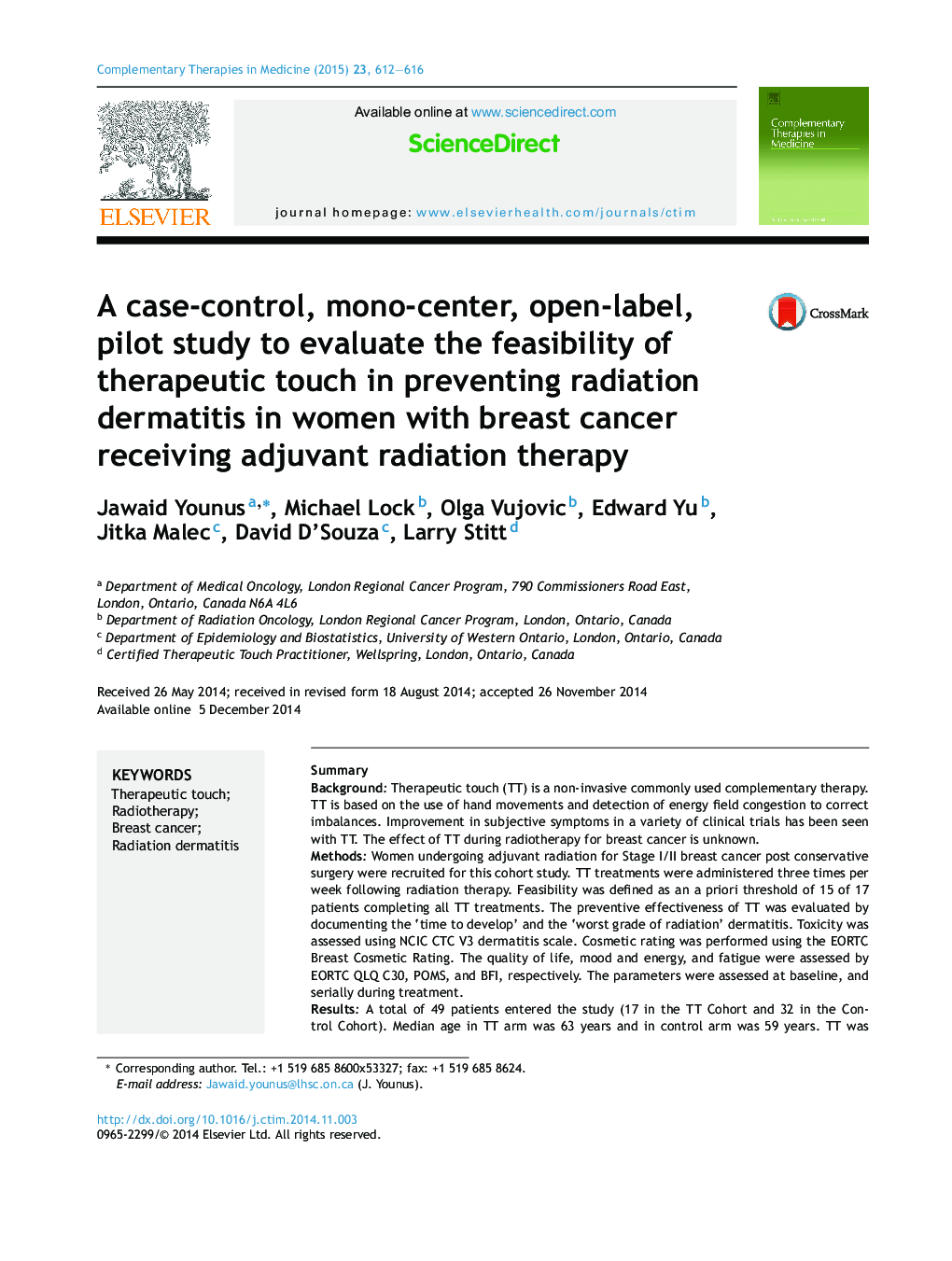| کد مقاله | کد نشریه | سال انتشار | مقاله انگلیسی | نسخه تمام متن |
|---|---|---|---|---|
| 2628562 | 1136475 | 2015 | 5 صفحه PDF | دانلود رایگان |
• We examined the effect of therapeutic touch in prevention of radiation dermatitis.
• Every patient offered the study accepted it.
• Radiation dermatitis worst grade and time to develop it remained unchanged.
• Quality of life, fatigue and mood measurement were largely unaffected.
SummaryBackgroundTherapeutic touch (TT) is a non-invasive commonly used complementary therapy. TT is based on the use of hand movements and detection of energy field congestion to correct imbalances. Improvement in subjective symptoms in a variety of clinical trials has been seen with TT. The effect of TT during radiotherapy for breast cancer is unknown.MethodsWomen undergoing adjuvant radiation for Stage I/II breast cancer post conservative surgery were recruited for this cohort study. TT treatments were administered three times per week following radiation therapy. Feasibility was defined as an a priori threshold of 15 of 17 patients completing all TT treatments. The preventive effectiveness of TT was evaluated by documenting the ‘time to develop’ and the ‘worst grade of radiation’ dermatitis. Toxicity was assessed using NCIC CTC V3 dermatitis scale. Cosmetic rating was performed using the EORTC Breast Cosmetic Rating. The quality of life, mood and energy, and fatigue were assessed by EORTC QLQ C30, POMS, and BFI, respectively. The parameters were assessed at baseline, and serially during treatment.ResultsA total of 49 patients entered the study (17 in the TT Cohort and 32 in the Control Cohort). Median age in TT arm was 63 years and in control arm was 59 years. TT was considered feasible as all 17 patients screened completed TT treatment. There were no side effects observed with the TT treatments. In the TT Cohort, the worst grade of radiation dermatitis was grade II in nine patients (53%). Median time to develop the worst grade was 22 days. In the Control Cohort, the worst grade of radiation dermatitis was grade III in 1 patient. However, the most common toxicity grade was II in 15 patients (47%). Three patients did not develop any dermatitis. Median time to develop the worst grade in the control group was 31 days. There was no difference between cohorts for the overall EORTC cosmetic score and there was no significant difference in before and after study levels in quality of life, mood and fatigue.ConclusionThis study is the first evaluation of TT in patients with breast cancer using objective measures. Although TT is feasible for the management of radiation induced dermatitis, we were not able to detect a significant benefit of TT on NCIC toxicity grade or time to develop the worst grade for radiation dermatitis. In addition, TT did not improve quality of life, mood, fatigue and overall cosmetic outcome.
Journal: Complementary Therapies in Medicine - Volume 23, Issue 4, August 2015, Pages 612–616
